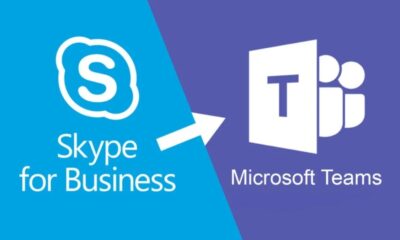Business
Step-by-Step Guide to Become Self-Employed: Tips to Start Your Own Business

There are more benefits to working for yourself than what first meets the eye, despite the well-known drawbacks of self-employment, which include lack of bosses and ownership of health insurance. No matter what your field, there are many ways to become self-employed or launch your own company. Find out what self-employment is all about, where to begin, and the most popular methods.
What is self-employment?
Working for yourself or hiring contractors or freelancers to generate revenue is known as self-employment. There are many other ways to be self-employed, such as operating an online store, opening a physical coffee shop, or providing one-on-one assistance to clients as a fitness teacher. You arrange your own hours and manage your own business as a self-employed worker.
Types of self-employment
Approaching self-employment can be done in three ways:
Being a company owner
You are in complete control of the management and finances of your company when you are its owner. You could launch a brick-and-mortar company offering services like haircuts or launch an online store selling handmade candles as a small business owner. You can outsource some of the management of your company to other parties, engage staff to assist in running it or do everything yourself.
Freelancing
Freelancers provide specialized services to several clients on a project-by-project basis. Examples of these professionals are freelance writers, video editors, and software developers. A content writer taking on the task of writing two blog posts each week for a cosmetic brand is an example of this.
You charge an hourly or project-based fee to your clients as a freelancer in exchange for their time and services.
Contracting
Like freelancers, independent contractors are self-employed individuals who work for clients on an as-needed basis. One way that contractors differ is that they may perform tasks that are more akin to full-time, 9–5 jobs. Generally speaking, they take on fewer clients than freelancers, focusing the majority of their time on one or two clients who generate the majority of their revenue. For example, an independent contractor may handle the bookkeeping for a company.
Advantages of self-employment
Think about the following benefits of beginning your self-employment journey:
Adaptivity
Many self-employed people and business owners like having this level of freedom and control in their work lives. Working for oneself might feel tremendously liberating when compared to a standard corporate setting.
Personal fulfillment
Starting a business can seem like a lifelong calling to some people. It may be quite satisfying to hone your skills, form bonds with customers, and create something that others love.
Potential revenue
The earning potential of self-employed work is limitless since it is totally up to you how quickly you want to expand your company. An independent contractor can set their own rates, but an employee’s compensation is limited by their wage band.
Drawbacks of self-employment
Significant risks that small business operators must deal with include:
Uncertainty
Your ability to make money as an independent contractor depends on both your ability to draw in clients and your level of effort. Your work may cause you to experience both busy and sluggish seasons with notable variations in your amount of business. Gaining a clientele and making a profit could take months or even years. Competition, natural disasters, and economic downturns are examples of outside variables that might affect the performance of your company.
Responsibility
As an independent contractor, you are responsible for providing your own benefits, including health insurance and any benefits offered by your employer. It also entails taking on responsibilities for facets of self-employment like marketing and accountancy that you might not be particularly skilled in.
Upfront investment
It will take a great deal of time and resources to get your business up and running when you are first starting or moving to self-employment. Because everything is still extremely new and in its early stages of development, this first hurdle is frequently when independent contractors earn the least money.
- How to become self-employed
- Define your business
- Research
- Create a business plan
- Consider registering as an LLC
- Gather funding and financing
- Promote your business
The following stages can help you transition to self-employment:
- Describe your enterprise
If you want to work for yourself, start by evaluating your abilities, knowledge, and interests. Just a moment to consider:
- What looks forward to seeing you as the sun rises?
- What skills, education, and background do you possess?
- Which of your weaknesses exist?
- Which sectors or topics pique your interest?
When brainstorming a company idea, consider the issues you could resolve, the holes in the industry you could cover, or the current services you could enhance.
- Research
Check to see if your business idea is feasible after that. Arrange to speak with other independent contractors in related industries for informational interviews. Determine who your rivals are and observe how they operate. Study up on various business operating strategies and business model concepts.
- Work on your business strategy
An overview in brief. a one-page summary of the objectives of your company.
Goods or services provided. Here, you will provide a thorough explanation of your goods or services, outlining their salient characteristics and advantages.
Market research. Provide a synopsis of the industry, a competitive study of the advantages and disadvantages of your rivals, and data on the size and development potential of the market.
Strategy for marketing. Provide a high-level summary of the metrics you plan to look at to determine success as well as the marketing channels you plan to employ to promote your company.
Logistics schedule. Explain the distribution plan and production procedure.
Budgetary scheme. Describe the funding required to launch the business and your projected revenue after it is operational.
Team Management. Introduce the important team members and their responsibilities in this section if you intend to hire staff.
- Consider registering as an LLC
By default, your company is first classified as a sole proprietorship. On the other hand, setting up your firm as an LLC provides several advantages and safeguards. You are the owner and operator of the business, not the LLC, unlike with a sole proprietorship. This structure therefore protects you from personal culpability should something bad happen to your business.
Selecting between an LLC and a sole proprietorship affects funding possibilities, beginning expenses, and tax structure.
- Obtain funding and finance
If you’re a novice freelancer with few startup costs—for example, a graphic designer or social media manager—you might be able to look for work straight away on websites like Upwork and Fiverr in addition to through personal connections. You could need to raise money if you’re starting from scratch and need the money for inventory or office space.
Obtaining capital and launching your company bank account can be done in several methods. The US Small Business Administration is a popular choice among entrepreneurs and business owners for access to special loans. Others might turn to nearby banks, acquaintances, or relatives for help raising the money required to launch their company or hire partners.
Use your company plan to notify loan lenders about your plans and to attract potential investors.
- Promote your business
Your marketing strategy might be informed by the goals, mission, and vision that you have already stated. To reach potential clients, whether you’re a freelance software developer or a neighborhood plumber, focus on developing a social media presence. Utilize the social media channels that are most appropriate for your company to publish social proof, behind-the-scenes content, and information about your goods and areas of expertise.
-

 Festivals & Events4 weeks ago
Festivals & Events4 weeks agoList of March National Days for Small Business Marketing to Boost Your Brand
-

 Business2 weeks ago
Business2 weeks agoNayef Doleh Examines International Humanitarian Fundraising Strategies
-

 Business3 weeks ago
Business3 weeks agoHow Black Banx is Redefining Global Banking Strategies in 2025
-

 Tech4 weeks ago
Tech4 weeks agoHow to Switch Between Microsoft Teams and Skype, How To Export Messages, Files, and Contacts from Skype Before It Shutting Down
-

 Tech3 weeks ago
Tech3 weeks agoMicrosoft Teams to End SMS Messaging Feature Support for Android Phones and Switch to Phone Link App as Alternative
-

 Business4 weeks ago
Business4 weeks agoPurpose of the AIRdiamond Project
-

 Business1 week ago
Business1 week agoHow to fill MSME Form 1? Step-by-Step Guide
-

 Education3 weeks ago
Education3 weeks agoSchool Of Odd Thinkers – Think Odd, Learn a lot, and Earn a lot














